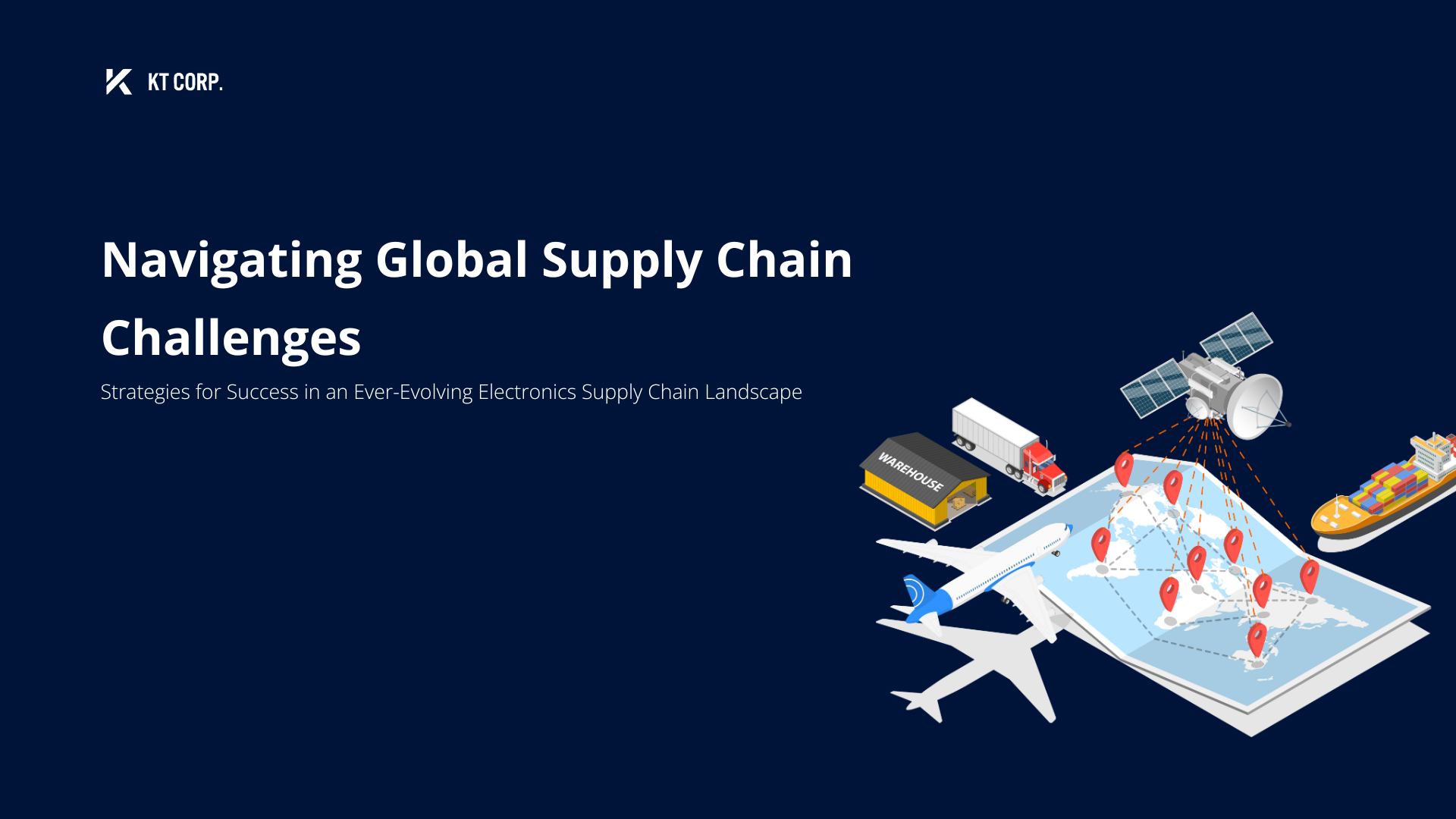
Navigating Global Supply Chain Challenges
As we embark on a new chapter in the electronics industry, the challenges within the global supply chain have become more apparent than ever. In our latest newsletter, we delve into the strategies and insights that are important for Electronics Wholesalers worldwide to navigate these challenges successfully.
1. Understanding the Landscape:
In the ever-evolving landscape of the global supply chain for electronics, there are rapid technological advancements that fuel an insatiable demand for electronic components and devices, leading to intricate supply chain intricacies. However, the industry faces persistent challenges, including Electronic supply shortages, geopolitical uncertainties impacting raw material sourcing, and transportation bottlenecks. Navigating through these complexities requires a proactive and strategic approach, that emphasizes on supply chain resilience, and the integration of cutting-edge technologies. As electronics manufacturers and wholesalers adapt to this dynamic environment, staying informed about the latest trends, regulatory changes, and collaborative opportunities becomes imperative for sustaining operational efficiency and meeting the demands of a globalized market.
2. Proactive Planning for Resilience:
In today’s dynamic electronics landscape, disruptions are the norm. Proactive planning is the compass guiding businesses through uncertainties in the global supply chain.
- Building a Foundation: Understanding the intricacies of the electronics supply chain is the first step.
- Mitigating Risks: To effectively address risks, it’s crucial to understand them. Explore the key challenges impacting the wholesale electronics supply chain, including supply shortages, geopolitical uncertainties, and market volatility.
- Diversification Strategies: Diversifying supplier networks and sourcing channels is a potent strategy. Learn how a diversified approach helps in mitigating the impact of potential disruptions, providing flexibility and stability.
Real-Time Monitoring and Data Analytics: Harness the power of real-time monitoring and data analytics. By implementing advanced tracking systems, businesses can identify potential risks early, enabling swift and informed decision-making.
- Agile Scenario Planning: Anticipating and preparing for various scenarios is crucial for agility. Explore the process of scenario planning, enabling informed decision-making in response to uncertainties.
- Tech-Driven Solutions: Embrace technology for enhanced resilience.
- Strategic Collaborations: Forge strategic partnerships with suppliers and logistics providers to create a network of support. Collaboration is key to fostering adaptability and resilience.
- Continuous Improvement: Resilience is an ongoing journey. Regularly assess and refine strategies to adapt to evolving market dynamics and emerging challenges.
3. Technology Integration for Efficiency:
- Integrating advanced technologies into electronics global supply chains can significantly enhance efficiency and resilience.
4. Diversification Strategies:
- In an era marked by global uncertainties and rapid changes, the importance of a resilient supply chain is one the key factors for success .One key strategy that emerges as a linchpin for success is diversification.
- One way to diversify your supply chain is having a wide network of buyers and vendors across various regions. This strategic approach acts as a buffer against disruptions, whether caused by geopolitical events, natural disasters, or unforeseen market shifts. By reducing reliance on a single source, your business becomes more robust and less vulnerable to sudden shocks.
- Managing cost Fluctuations is critical for success of any business, especially in the electronics wholesale industry. Building Strong relationships can help you better negotiate better terms and get more flexible pricing. Developing a flexible pricing strategy that will help you adjust based on market conditions. Building a contingency fund will help cushion the impact of several cost increases. It will help you navigate better during times of uncertainty or slow periods.
5. Strategic Partnerships and Collaboration:
- Forming Strategic Partnerships are catalysts for growth and innovation. The dynamics of of two or more companies forming partnerships bring out the strengths of the multiple entities, allowing the companies more ability to scale with fewer resources. With the alliance, the partners will be able to penetrate untapped territories and diversifying their reach that will ultimately pave the way for accelerated growth.
6. Regulatory Compliance:
- Regulatory compliance acts a legal protection protecting business from paying fines, penalties and anything that may arise from non compliance.
- Regulatory compliance impacts business across various dimensions, it impacts the way companies operate, their reputation, and overall success. Its critical that every business understands the framework and implement sustainable business practices.
- By treating compliance as a priority business can mitigate from risk, build trust and create a solid foundation for long term in success.
7. Navigating Transportation Challenges:
- In the intricate world of global supply chain, transportation acts as the lifeblood that ensures goods flow seamlessly from manufacturers/distributors to consumers.
- As supply chains stretch across continents, the geographic distance poses a significant challenge. Shipping long distance can result in many problems such as increased lead times that can affect the supply chain responsiveness.
- The complexity of coordinating various transportation modes can lead to logistical challenges. Effective coordination and communication can help prevent delays and disruptions.
- The cost of fluctuations of oil prices, tolls and other operational costs contribute to rising transportation expenses. Business must optimize routes and modes to mitigate cost increase and maintain a profitable business.
In the dynamic landscape of global supply chains, businesses encounter a range of obstacles, from geographical complexities to regulatory hurdles and rising costs. This summary highlights the importance of technology integration, sustainability considerations, and efficient last-mile delivery solutions. It emphasizes the need for businesses to adopt adaptive strategies, invest in technology, and foster strategic collaborations to successfully navigate the complexities of the modern global supply chain.
